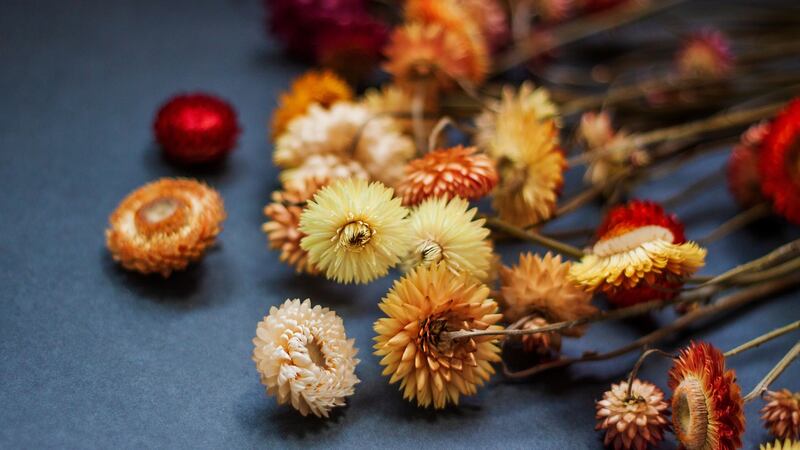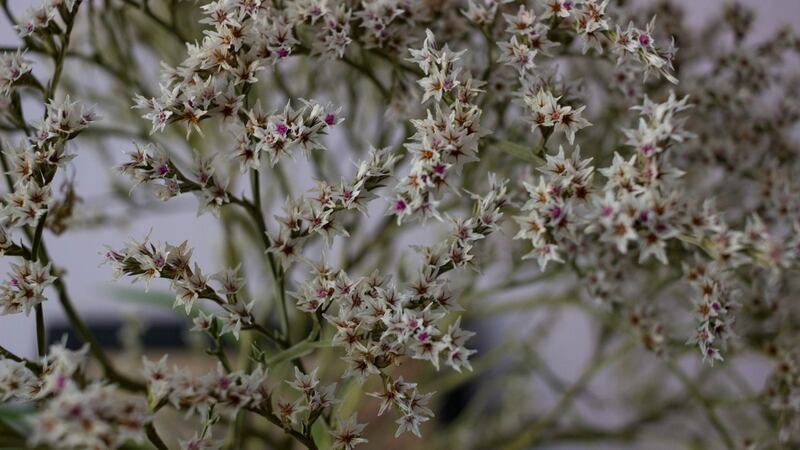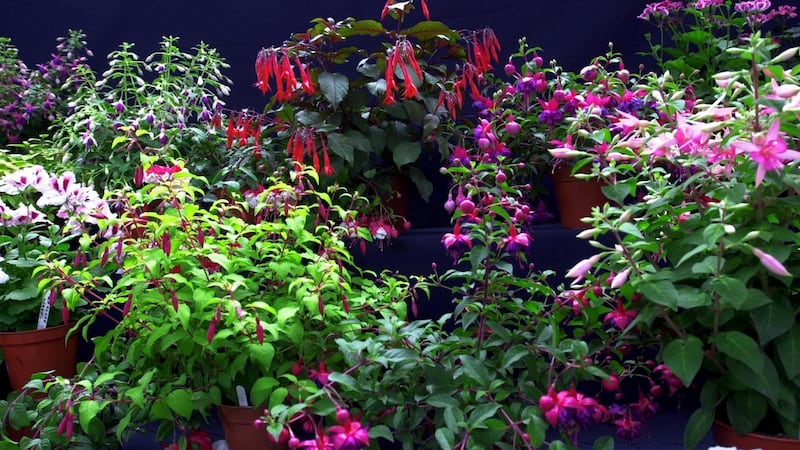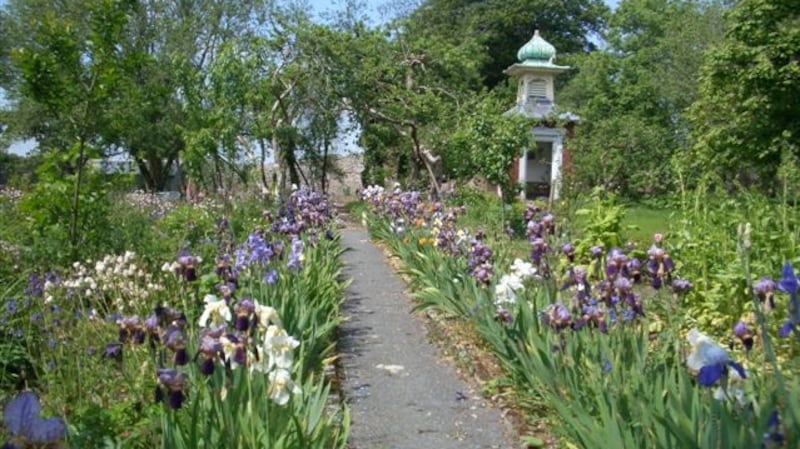While dried flowers are the height of fashion, too often shop-bought bunches are sprayed with preservatives or coloured with synthetic, environmentally harmful dyes. Growing your own is a wonderful solution, providing you with bucketloads of beautiful, planet-friendly stems – but which species or varieties to grow? Here’s a shortlist of 10 of the best.

1 Strawflower (Helichrysum bracteatum/ Bracteantha bracteata)
Probably the best-known of all of the dried flowers, its star-shaped, papery, long-lasting blooms come in a wide range of jewel-like colours and are perfect for home-drying to use in dried wreaths, bouquets and arrangements. A short-lived but fast-growing, hugely productive, half-hardy annual, it won’t tolerate any degree of frost and is best raised from seed sown under cover with gentle heat in April (barely cover the seed, which needs light to germinate) and then grown on under cover as young transplants for transplanting outdoors in May once all risk of frost has passed. Give it a fertile, moist but free-draining soil and a sheltered spot in full sun.
2 Billy Buttons/Sun Ball (Craspedia globose)
This oh-so-fashionable, borderline hardy perennial is prized by florists for its golden, marble-sized, globe-shaped flowers which appear on long, slender, wiry stems from summer until the first harsh frosts. You’ll occasionally find plants for sale in garden centres but it’s easily raised from seed sown under cover and with gentle heat in mid-spring (the seeds need light to germinate so barely cover them with a very light top dressing of vermiculite or compost). Prick out and grow the seedlings on under cover as young transplants for transplanting outdoors once all risk of frost has passed. A native of Australia, Billy Buttons needs a very free-draining soil and a very sunny, sheltered spot to overwinter. Height and spread of 40cm.
3 Tassel-flower/Amaranthus caudatus
A showstopper in a flower border, this statuesque plant’s velvety, trailing, colourful blooms make wonderful dried flowers. Another half-hardy annual that won’t tolerate any degree of frost but is easily raised from seed sown under cover and with gentle heat in mid-spring, its seeds need light to germinate so barely cover them with a very light top-dressing of vermiculite or compost. Prick out and grow the young seedlings on under cover as young transplants for transplanting outdoors once all risk of frost has passed. Many great varieties are available that are suitable for drying including A. ‘Coral Fountain’ and A. ‘Green Tassels’.

4 German statice/Sea Spray (Limonium tataricum)
A really productive, resilient, perennial species of statice or “sea spray” with dense sprays of silver-grey flowers that are brilliant for drying. Easily raised from seed sown under cover in spring with good bottom heat, the seeds need darkness to trigger germination so cover the pot/seed tray with a lid. Transplant the young plants outdoors in early summer after all risk of frost has passed. This hardy perennial needs a very free-draining, not overly-fertile soil and a position in full sun.
5 Chinese Fountain Grass/Pennisetum villosum 'Cream Falls'
A drop dead gorgeous perennial ornamental grass that produces an abundance of oh-so-strokable, fluffy, silver-white flowers (or inflorescences as they’re properly known) from mid-summer right into winter. Borderline hardy (it will tolerate temperatures down to minus 5 degrees), in colder gardens it should be treated as an annual or protected with mulch and fleece on chilly nights. Easily raised from seed sown under cover in early-mid spring and with gentle heat for transplanting out into the garden in early summer, it needs full sun and a very free-draining, light soil.
6 Wrinkled cress/Persian cress (Lepidium sativum)
Another favourite of mine, it’s the upright, silvery seedheads of this fast-growing ornamental cress that make such a brilliant “filler” in a dried arrangement, where they’ll add oodles of interesting texture and froth. A hardy annual, it can be direct sown into the ground at this time of year as long as the soil is workable and free from weeds. A tall plant (it reaches an average height of 90-100cm), it’s a good idea to support some garden netting horizontally above the young plants to stop them flopping over later in the season.
7 Honesty/'Lunaria annua'
One of the best known of dried flowers, it’s actually the silvery, disc-shaped seed-heads of this short-lived biennial that are such a fashionable element of many contemporary dried flower arrangements. Sow seed in May/early June directly into a well-prepared seed bed outdoors and then transplant the young plants into their final growing position in autumn. You’ll have to wait until late spring of next year for the young plants to flower, after which those ornamental seed heads will slowly form and ripen on the stem. Harvest them in late summer before they get too ragged.
8 Hydrangea
The large, decorative blooms of these long-flowering, long-lived shrubs make great dried flowers as long as you concentrate on the mop-headed and paniculata-types and harvest the flowers in late summer or early autumn when they’ve ripened on the stem a little. Examples of suitable varieties include the eternally fashionable, lime-green/white Hydrangea arborescent “Annabelle”, Hydrangea paniculata “Limelight”, and most varieties of Hydrangea macrophylla. These fast-growing, large shrubs typically like a rich, cool, moist but free-draining soil in full sun/ light shade with protection from cold wind. Container-grown plants are readily available from good Irish garden centres and specialist nurseries while young plants can also be easily raised from cuttings taken from early summer-autumn.

9 Yarrow/ Achillea 'Moonshine
The golden, umbel-shaped flowers of this easy to grow, ultra-hardy, herbaceous perennial look as good in a dried bouquet as they do growing in a sunny border or a gravel garden alongside ornamental grasses and other modern perennials that like similar growing conditions such as ornamental salvias and echinaces. Happiest in full sun, it will also grow in light shade and needs a free-draining soil. Not available as seed (it’s a sterile variety), container-grown plants are readily available from good Irish garden centres and specialist nurseries while established clumps can also be easily divided at this time of year.
10 Larkspur (Consolida ajacis)
The short-lived cousin of the true delphinium, the tall, slender, pollinator-friendly flower spikes of this very pretty, hardy annual come in a range of colours, from white and smoky lavender to pink and kingfisher blue. Very rarely available in garden centres, it’s best raised from seed which can be sown in autumn or from late spring. Larkspur seed needs to be exposed to cold temperatures to germinate so make sure to pop the seed packets in the fridge for a week before sowing. The seeds also need darkness to trigger germination so cover the tray/pot/seedbed with an upturned tray/pot until you see obvious signs of growth. Leave the trays of young seedlings outside as the plants need at least six weeks of cool temperatures to flower well. Larkspur likes a fertile, moisture-retentive but free draining soil in full sun.

This week in the garden…
The harsh, cold weather of recent weeks is a timely reminder that winter hasn’t yet released its icy grip. So make sure to take extra care of vulnerable seedlings on chilly nights, especially heat-lovers such as tomatoes which really resent cool temperatures and icy draughts. If low temperatures are forecast, protect glasshouse/polytunnel-raised seedlings with several layers of fleece suspended above them, making sure to remove it in the morning and to shake away any moisture from the surface. If very cold temperatures are forecast, consider using a thermostatically controlled heater to prevent frost damage.
Late February is the best time to prune back many different kinds of winter-flowering shrubs including winter honeysuckle (Lonicera sp), Viburnum x bodnantense and V farreri and winter jasmine once they’ve finished flowering. Many types of late-summer flowering shrubs can also be pruned at this time of year to encourage a good display of flowers, including the butterfly bush (Buddleja), potentilla, perovskia, romneya, fuchsia and caryopteris, all of which flower on new growth.

Dates For Your Diary
Until the end of February, Snowdrop Month in Carlow, a month-long celebration of the county's snowdrop gardens at Altamont, Huntington Castle, Burtown and Shankill Castle, see carlowtourism.com for details of opening times
Wednesday, March 2nd (7.30pm-9pm), a talk by the gardener and broadcaster Paul Smyth about the late garden designer and plantsperson Angela Jupe and her garden at Bellefield House, Shinrone, Co Offaly, which she left to the Royal Horticultural Society of Ireland, see rhsi.ie.













